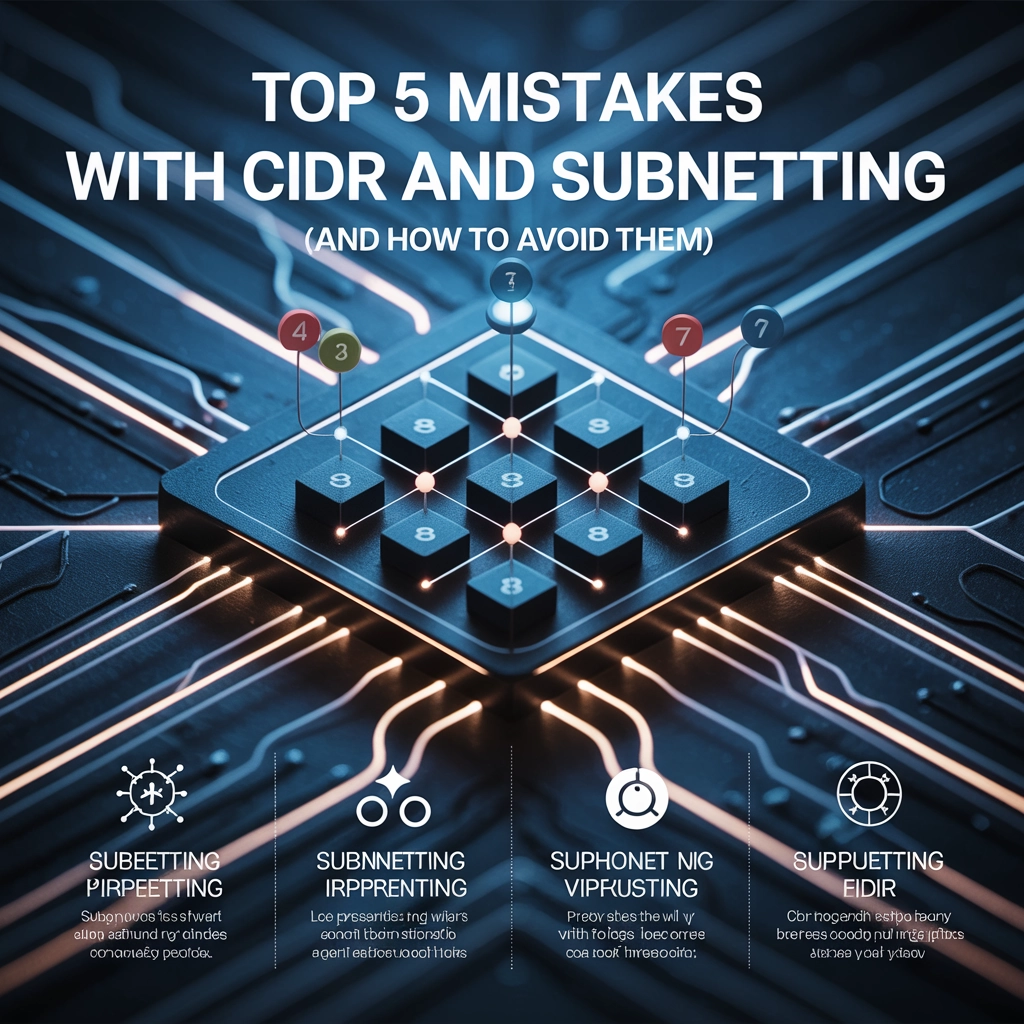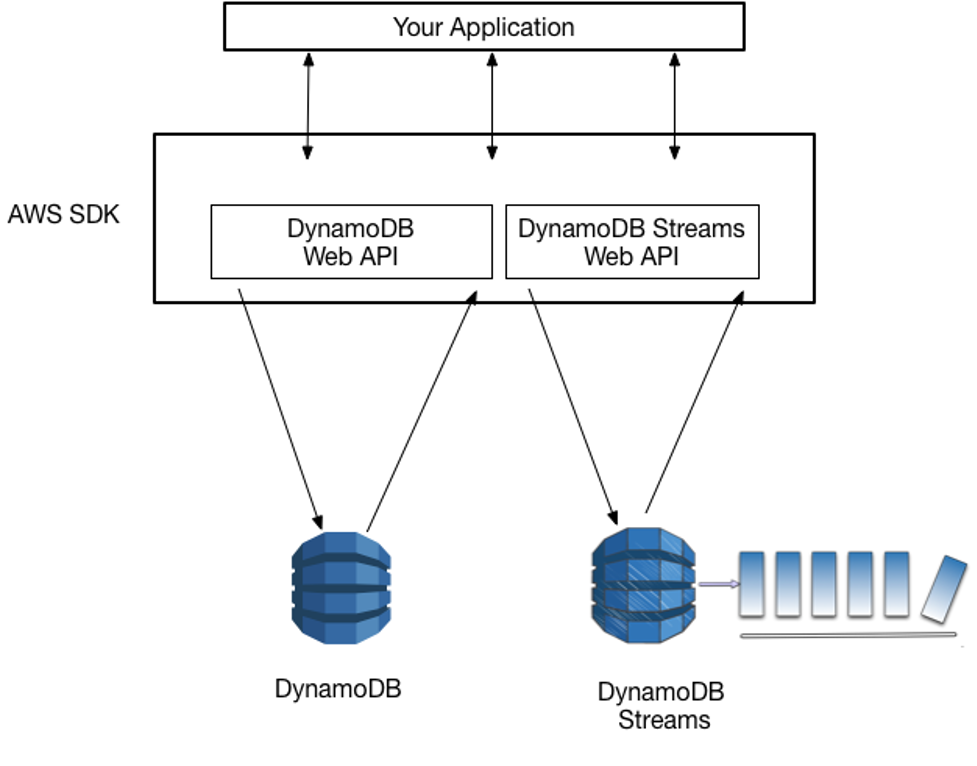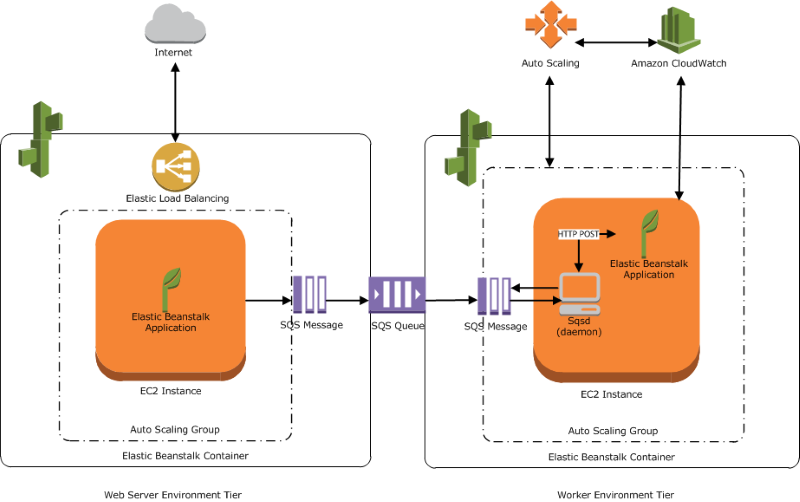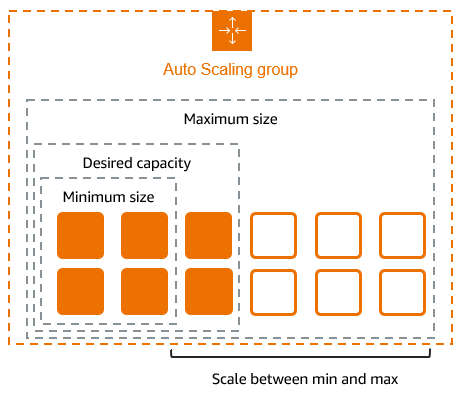Introduction
In the world of network engineering and cloud infrastructure, CIDR (Classless Inter-Domain Routing) notation and subnetting are fundamental concepts that can make or break your network design. Whether you're configuring a corporate network, setting up cloud resources, or studying for certification exams, understanding these concepts is crucial.
However, even experienced professionals can fall prey to common pitfalls when working with IP addressing and subnetting. These mistakes can lead to connectivity issues, security vulnerabilities, and inefficient resource utilization that may be difficult to troubleshoot.
In this comprehensive guide, we'll explore the top five mistakes professionals make with CIDR and subnetting, and provide practical solutions to avoid them. Let's dive in!
Mistake #1: Overlapping CIDRs in Network Peering
One of the most common and troublesome mistakes occurs when setting up network peering connections between Virtual Private Clouds (VPCs) or on-premises networks.
The Problem
When two networks with overlapping CIDR blocks attempt to communicate via peering, routing conflicts arise because the systems cannot determine which network should receive traffic for the overlapping address space. This results in dropped packets, failed connections, and frustrated users.
Consider this scenario: Your primary VPC uses 10.0.0.0/16 and you create a second VPC with 10.0.64.0/18. Since the second range falls entirely within the first, any peering connection between these VPCs will fail or cause unpredictable routing behavior.
How to Avoid It
-
Plan your network addressing strategy in advance: Before deploying any infrastructure, map out your entire addressing scheme, considering future growth.
-
Use IPAM tools: IP Address Management tools help visualize and track your network allocations, making conflicts easier to spot before they happen.
-
Implement non-overlapping addressing: Ensure each network segment has a unique CIDR range that doesn't intersect with others:
- Production VPC:
10.0.0.0/16 - Development VPC:
10.1.0.0/16 - Test VPC:
10.2.0.0/16
- Document your CIDR allocations: Maintain a central registry of network allocations to prevent conflicts when new networks are added.
# Example CIDR Allocation Document
Region | VPC Purpose | CIDR Block | Notes
----------------|------------------|-----------------|------------------
us-east-1 | Production | 10.0.0.0/16 | Main application
us-west-2 | DR Site | 10.1.0.0/16 | Disaster recovery
eu-central-1 | EU Production | 10.2.0.0/16 | GDPR compliant

Mistake #2: Assigning Too Small or Too Large Subnets
Sizing subnets appropriately is a balancing act that many get wrong.
The Problem
Too Small: Underestimating growth requirements can lead to IP exhaustion, forcing disruptive network redesigns.
Too Large: Overly generous subnet allocations waste IP space and limit the number of available subnets, creating inefficiency.
For example, allocating a /24 subnet (256 IPs) for a branch office with only 10 devices might seem convenient, but across dozens of locations, this approach can quickly deplete your available address space.
How to Avoid It
- Right-size your subnets: Match subnet size to actual needs plus reasonable growth:
- Small branch (5-10 devices):
/28(16 IPs) - Medium office (20-50 devices):
/26(64 IPs) - Large department (50-100 devices):
/25(128 IPs) - Data center racks:
/27or/28per rack
- Implement hierarchical design: Use larger blocks for major segments and smaller subnets within them:
Corporate: 10.0.0.0/16
├── Marketing: 10.0.0.0/20
│ ├── NY Office: 10.0.0.0/24
│ └── LA Office: 10.0.1.0/24
└── Engineering: 10.0.16.0/20
├── Development: 10.0.16.0/24
└── QA: 10.0.17.0/24
- Plan for future growth: Leave room for expansion without being wasteful. For example, if you need 30 IPs now, don't use a
/30(4 IPs) or/16(65,536 IPs) – choose a/26(64 IPs) instead.
Mistake #3: Confusing Subnet Masks with CIDR Notation
CIDR notation and subnet masks represent the same information in different formats, but mixing them up can lead to errors.
The Problem
Engineers often mistakenly convert between subnet masks and CIDR notation, leading to incorrect network configurations. For example, thinking that a /24 is equivalent to 255.255.0.0 (which is actually a /16).
This confusion leads to misconfigured routers, firewalls, and access control lists, causing connectivity or security issues that are hard to diagnose.
How to Avoid It
- Memorize common conversions:
/24=255.255.255.0/16=255.255.0.0/8=255.0.0.0/27=255.255.255.224/28=255.255.255.240/29=255.255.255.248/30=255.255.255.252
-
Understand the binary math: Each CIDR number represents the count of consecutive 1s in the subnet mask. For example,
/24means 24 bits are set to 1. -
Use subnet calculators: Rely on tools like
ipcalc, online calculators, or built-in network tools to convert accurately.
# Example calculation
CIDR: 192.168.1.0/24
Subnet Mask: 255.255.255.0
Network Address: 192.168.1.0
Broadcast Address: 192.168.1.255
First Usable IP: 192.168.1.1
Last Usable IP: 192.168.1.254
Total Hosts: 254
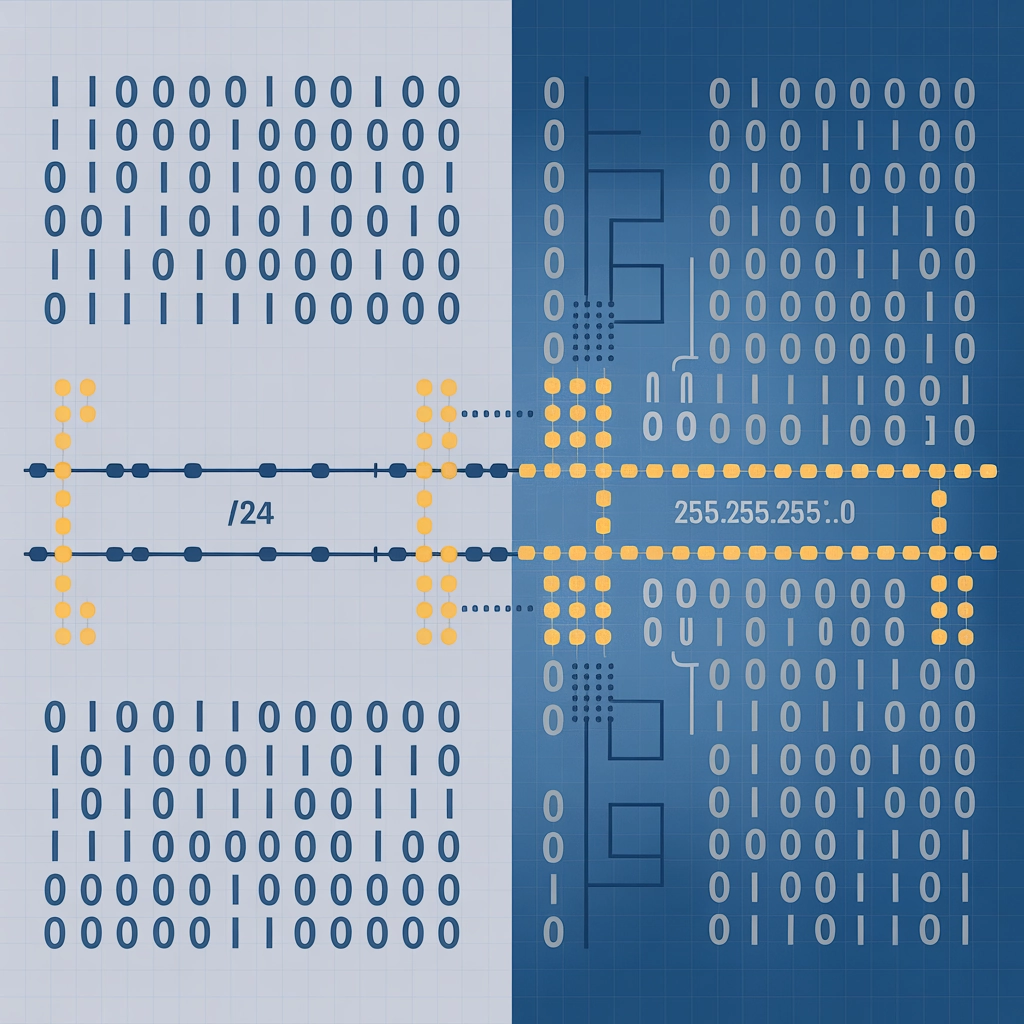
Mistake #4: Misconfigured Routing Due to Wrong CIDR Blocks
Routing problems are some of the most common networking issues, and they often stem from incorrect CIDR block specification.
The Problem
Specifying incorrect CIDR blocks in route tables can lead to:
- Black-hole routes where traffic disappears
- Suboptimal routing paths causing latency
- Unintentional exposure of traffic to the internet
- Routing loops causing packet loss and high latency
For instance, if you have a subnet 10.0.1.0/24 but configure a route for 10.0.1.0/25, half of your subnet's traffic will follow a different path, leading to connectivity issues.
How to Avoid It
-
Double-check route entries: Verify that CIDR blocks in route tables exactly match your subnet definitions.
-
Use the principle of specificity: More specific routes (larger prefix length) take precedence over less specific ones. Ensure this behavior aligns with your intentions.
-
Test with traceroute/tracert: Verify traffic follows expected paths by testing before and after route changes.
-
Implement route validation: Use infrastructure as code (IaC) tools like Terraform with validation rules to prevent misconfigurations:
# Terraform example with validation
resource "aws_route" "private_route" {
route_table_id = aws_route_table.private.id
destination_cidr_block = "0.0.0.0/0"
nat_gateway_id = aws_nat_gateway.main.id
lifecycle {
precondition {
condition = cidrsubnet("0.0.0.0/0", 0, 0) == "0.0.0.0/0"
error_message = "Invalid CIDR block format for route."
}
}
}
- Document your routing design: Maintain clear documentation of intended traffic flows to reference during troubleshooting.
Mistake #5: Not Accounting for Reserved IPs in Cloud Environments
Cloud providers like AWS, Azure, and GCP reserve certain IP addresses in each subnet for internal use, which many engineers overlook.
The Problem
In AWS, for example, the first four IP addresses and the last IP address of each subnet are reserved and cannot be assigned to instances. If you design your network without accounting for these reserved addresses, you may end up with fewer usable IPs than expected.
This becomes especially problematic with small subnets. A /28 subnet has 16 IP addresses, but with AWS reservations, only 11 are usable – a significant reduction of 31%.
How to Avoid It
- Know your cloud provider's reservations:
- AWS: First 4 and last IP in each subnet
- Azure: First 4 and last IP in each subnet
- GCP: First 2 and last 2 IPs in each subnet
- Calculate usable IPs correctly:
For a subnet with n total IPs, usable IPs are typically:
- AWS/Azure: n – 5
- GCP: n – 4
- Size subnets with reserved IPs in mind:
AWS Subnet Size | Total IPs | Usable IPs
-------------------|-----------|------------
/28 | 16 | 11
/27 | 32 | 27
/26 | 64 | 59
/25 | 128 | 123
/24 | 256 | 251
- Use cloud-specific calculators: Many providers offer calculators that account for their specific reservations.
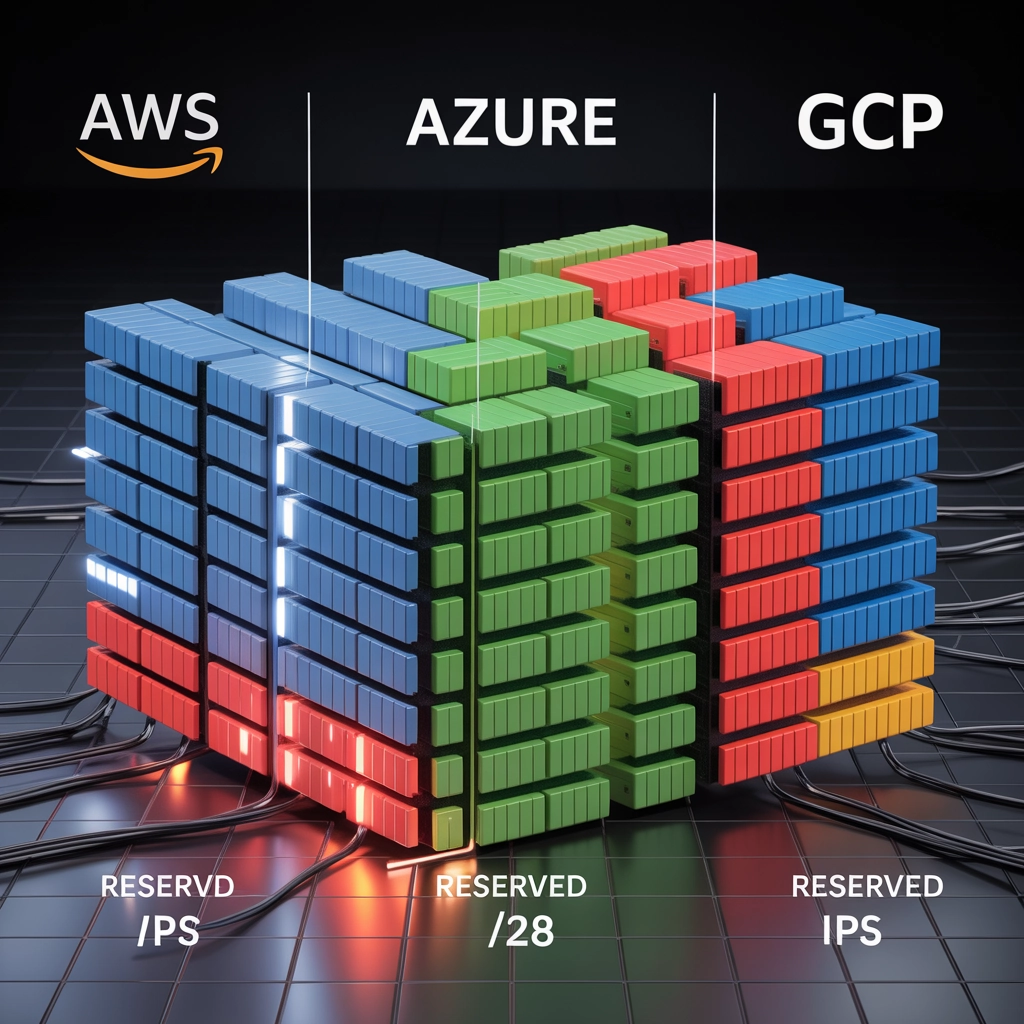
Best Practices for CIDR and Subnetting
To summarize, here are the key best practices to avoid all these common mistakes:
-
Plan holistically: Design your network addressing scheme with current needs, future growth, and peering requirements in mind.
-
Document everything: Maintain up-to-date documentation of all CIDR allocations, subnet assignments, and routing policies.
-
Use automation and tools: Leverage IPAM tools, subnet calculators, and infrastructure as code to reduce human error.
-
Implement validation: Build checks into your deployment pipelines to catch CIDR-related issues before they reach production.
-
Follow standard patterns: Use consistent subnet sizing strategies across your organization to prevent confusion.
-
Audit regularly: Review your network design periodically to identify inefficiencies or risks that may have developed over time.
Conclusion
Understanding and correctly implementing CIDR notation and subnetting is fundamental to successful network design and cloud infrastructure deployment. By avoiding these five common mistakes, you'll create more reliable, secure, and efficient networks that can scale with your organization's needs.
Remember that networking is as much about planning and documentation as it is about technical implementation. Taking the time to design your network addressing scheme properly will save countless hours of troubleshooting and reconfiguration down the road.
For more in-depth cloud networking guidance, check out our guide on AWS Route 53 or our DevOps career roadmap for networking professionals.
What CIDR and subnetting challenges have you faced in your environment? Share your experiences in the comments below!

